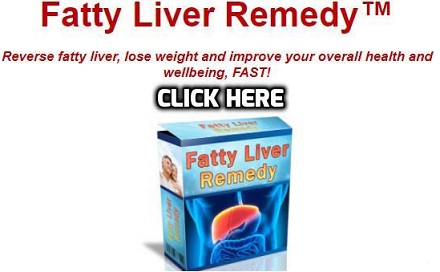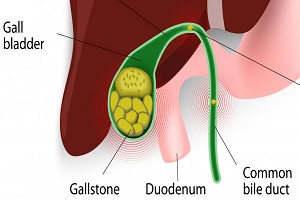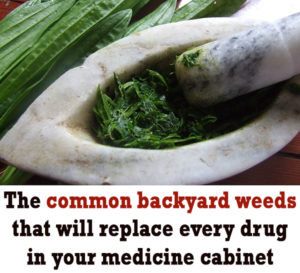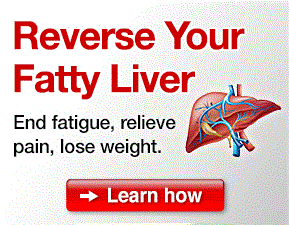Jaundice Types Causes Symptoms Treatment
Medical term which describing the yellow eyes and skin is called Jaundice. Jaundice is not a disease at all; it is a symptom of various possible underlying illnesses. When there is too much of bilirubin in our system then jaundice occurs. Bilirubin is a yellow pigment which is created by the breakdown of our dead red blood cells in the liver. Generally, liver gets rid of bilirubin aside with the old red blood cells.
The problem of jaundice indicates some serious problem with the function of the liver, pancreas, red blood cells and gallbladder. There are many other internal conditions which cause yellowing your skin.
Click here to read:- 10 Natural Home Remedies for the Treatment of Jaund1ce
Hepatitis

This inflammatory condition of the liver is caused by autoimmune disease, medications, toxins, infection, extreme blood loss, alcohol, and drugs.
It might be chronic or acute which depends on the cause.
Loss of appetite, vomiting, fatigue, vomiting, lethargy, right upper abdominal pain, itching skin, yellow eyes or skin and fluid buildup in the stomach are the possible symptoms of jaundice.
Hepatitis A

Infection from the hepatitis A virus causes this type of liver inflammation.
Hepatitis A is a highly deadly form of hepatitis which can be spread through the contaminated water or food.
Normally Hepatitis A is not a serious issue (which may vary on different cases) and normally not causing any long-term effect and can be prevented by immunization before traveling to affected areas on someplace with poor sanitation service.
Symptoms of Hepatitis A include vomiting, nausea, fever, body aches, abdominal pain and loss of appetite.
Pale stools, dark urine, itchy skin, yellow skin and eyes and enlarge liver might occur within a week after contracting with this virus.
Click here to read:- Top 10 Home Remedies to Get Rid of Vomiting
Hepatitis B

Infection by the Virus of Hepatitis B causes liver inflammation.
This virus spreads through the direct contact with that infected blood, which is picked with sharing needles or contaminated needle, transfer from mother to the baby child during the birth, vaginal, oral and anal sex without using the protection of condom or by using shaving razors or by any other person item which remnants of infected fluid.
Common symptoms of hepatitis B include dark urine, fatigue, loss of appetite, joint and muscle pain, abdominal discomfort, fever, yellowing or weakness of the white portion of the eyes (sclera) and skin (jaundice).
Hepatitis B infection can be prevented by taking routine immunization.
Hepatitis C

Peoples those are suffering from light to severe symptoms of hepatitis C which includes dark urine, discomfort or pain in abdominal, fever, jaundice and pain in joint.
Infection by the hepatitis C virus causes this type of liver inflammation.
Hepatitis C is transmitted from blood to blood contact through someone who is infected with HCV.
Nearby 80% to 90% peoples those are having hepatitis C do not have any symptoms.
Hepatitis D
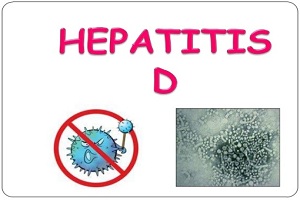
Infection from Hepatitis B and Hepatitis D virus causes this type of liver inflammation.
You can only suffer from Hepatitis D if you are already suffering from Hepatitis B.
Hepatitis D infection is deadly and spreads through the direct contact with infected person or through the bodily fluids.
Symptoms of Hepatitis D include yellow eyes and skin, stomach pain, loss of appetite, joint pain, vomiting, dark urine, laziness, and fatigue.
Hepatitis E

Hepatitis E is probably a serious acute liver disease which is caused by the virus of hepatitis E.
This infection is spreading through drinking or by eating contaminated water or food, or by blood transfusion or from mother to child transmission.
In most of the cases this infection clears itself after 7 to 10 days or sometimes more, but sometimes in rare cases, this infection may cause failure of the liver.
Yellowing of eyes and skin, joint pain, dark urine, pain the abdominal, a loss of appetite, nausea, fatigue, liver enlargement, fever, and vomiting are the possible symptoms of this problem.
Click Here to Read: Blood Transfusions Expectations and How Long Treatment Last
ABO Incompatibility Reaction
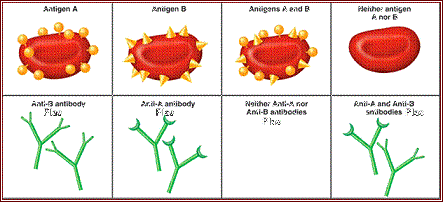
A person who is suffering from ABO Incompatibility Reaction needs a serious medical emergency and required urgent care.
This problem is very rare but it is a serious problem and possibly fatal response to unsuitable blood after blood transfusion.
Symptoms of this problem begin within a few minutes of receiving a blood transfusion.
This problem includes difficulty in breathing, nausea, chills and muscle ache. Other possible symptoms of this problem are jaundice, abdominal, back or chest pain and blood in urine.
Acute Pancreatitis
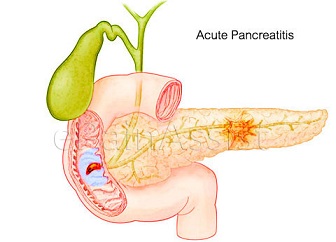
This condition requires an immediate medical treatment. This requires some serious medical care.
Painful inflammation of the pancreas is mostly caused by alcohol misuse (excess drinking) or by gallstones.
It creates sudden constant and severe pain the upper part of the stomach and the pain may travel from the whole body to the back.
The pain can be worst when you lay down on your back getting better when you sitting up or leaning towards forward.
Nausea and vomiting can occur when you suffering from it.
Alcoholic Liver Disease
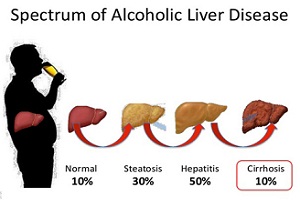
The problem of alcoholic liver disease is the inflammatory condition of the liver which is caused by heavy consumption of alcohol over a long period of time.
Symptoms of this diseases are depend on the amount of the damage to your liver.
Bruising or bedding, change in your mental state, laziness and fatigue, jaundice, swelling or pain in the stomach, vomiting, and nausea, and reduction in weight are all the possible symptoms of this problems.
Click here to read:- 9 Causes And Treatment Of Laziness And Fatigue
Bile Duct Obstruction
Bile duct obstruction condition is known as a medical emergency. In this situation, urgent care required to the affected person.
Mostly it is caused because of gallstones, but sometimes it also occurred due to injury to the liver or gallbladder, tumors, liver damage, inflammation, cysts, and infections.
Yellow eyes and skin, extreme itching on skin without rashes, very dark urine and light color of stools.
Pain in the upper side of the stomach, vomiting, nausea, and fever.
Blockage can cause some serious infection which requires urgent medical care.
Breast Milk Jaundice

This type of jaundice is related to breastfeeding.
Breastfeeding jaundice occurs normally one week after birth.
Generally, it does not cause any problem and ultimately goes away itself.
It causes the yellow discoloration of the skin and the whites of the eyes, poor weight, fatigue and high pitched crying.
Cirrhosis

Losing weight and decrease in appetite, swelling in stomach and diarrhea.
Bleeding and wounds.
Small and spider-shaped blood vessels which are visible underneath the skin.
Yellow eyes and skin, also itchy skin.
Drug-induced Immune Hemolytic Anemia
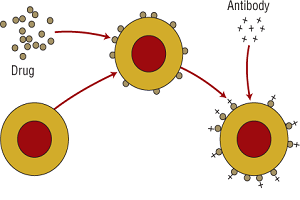
A problem of Drug-induced Immune Hemolytic Anemia occurs when a medication causes the body’s defense system aka immune system to mistakenly attack its own red blood cells.
Symptoms of this problem occur within a minute or in a day after taking medication.
Symptoms of this problem include laziness and fatigue, shortness of breath, pale gums and skin, whites of the eyes or yellowing of the skin, rapid heart rate and dark urine.
Click here to read:- 10 Early Symptoms Which Gives Direct Signs of Alzheimer
Gallstones
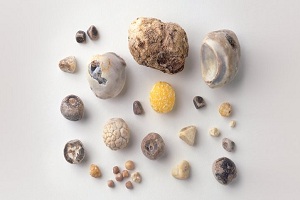
Gallstones formed due to the high concentration of bile, cholesterol or bilirubin in the fluid which is stored inside your gallbladder.
Normally gallstones do not cause any pain or symptom till they block the opening of gallbladder or bile ducts.
Pain in upper right portion or abdominal or pain in the stomach occurs after eating high fat and oily foods.
Some other symptoms of gallstones are nausea, vomiting, white stools, burping, vomiting, diarrhea, and indigestion.
Glucose-6-Phosphate Dehydrogenase (G6PD) Deficiency
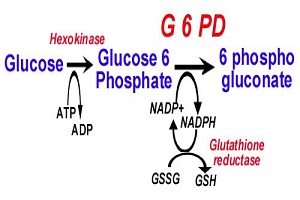
This genetic abnormality results in an inadequate amount of the glucose-6-phosphate dehydrogenase (G6PD) in blood.
G6PD deficiency is caused by red blood cells that break down and be destroyed prematurely which leads to hemolytic anemia.
Anaemia can be caused by eating legumes and fava beans, taking certain types of medication or experiencing infections.
Laziness and fatigue, shortness of breath, yellowing of the eyes and skin, urine which comes in dark or yellow-orange color, rapid heartbeat, yellow pale skin, and dizziness are the possible symptoms of Glucose-6-Phosphate Dehydrogenase (G6PD).
Idiopathic Autoimmune Hemolytic Anemia
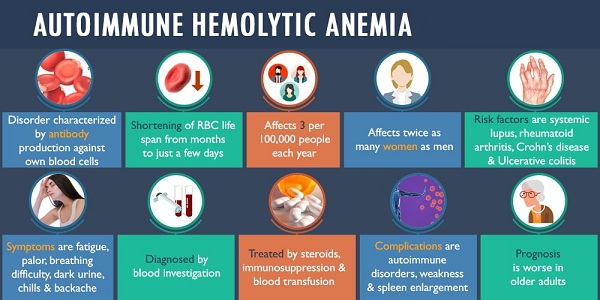
A person who is suffering from Idiopathic Autoimmune Hemolytic Anemia needs serious medical emergency and required urgent care.
This disease is very rare buy it is a serious blood disorder. It occurs when the body destroying red blood cells faster than it produces.
This problem may occur at any point in life and can develop gradually and suddenly.
Destruction of red blood cells causes limited to harsh anemia.
Symptoms of this problem include laziness and fatigue, yellow or pale skin, headache, vomiting, nausea, shortness of breath, dark urine, pain in abdominal and muscle pain.
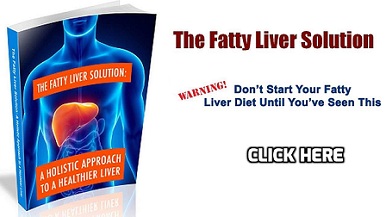
Click here to read:- 10 Natural Treatments To Coming Out From Depression
Liver Cancer
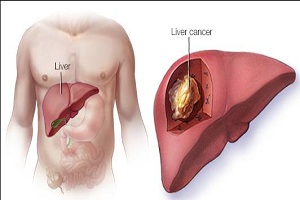
Liver cancer is a type of cancer which occurs when the cells of the liver become cancerous and begin to go out of control.
Different types of primary liver cancer arise from the different cells which make up the liver.
Tenderness, pain and stomach discomfort, especially in the upper right side of the stomach, are the possible symptoms.
Some other symptoms are yellow skin and whites of the eyes, white and chalky stools, vomiting, nausea, bruising and bleeding easily, weakness, laziness, and fatigue.
Newborn Jaundice

Newborn jaundice is a common health condition which occurs when a baby is having a high level of bilirubin in the blood soon after the birth.
Mostly it goes away itself when liver of the baby develops and when the baby starts taking the feed, it helps bilirubin pass through the body.
Very high levels of the bilirubin can put a baby on the risk of cerebral palsy, deafness or some other form of brain damage, that’s why jaundice should be very carefully monitored if it occurs in the baby after birth.
The symptom of the jaundice is yellow eyes and asking within the 2 or 4 days after the birth. Sometimes it starts from the face before spreading down across the whole body.
Dangerously elevated bilirubin symptom level includes jaundice which spread or become more intense over the time, poor feeding, fever, high pitched crying and listlessness.
Pancreatic Cancer
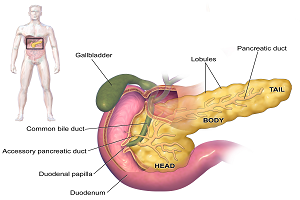
The Pancreatic cancer occurs when the cells of the pancreas, a vital endocrine organ which is located behind our stomach, become cancerous and grow out of control.
Detecting the cancer of pancreas may be very difficult and it is often diagnosed in the more advanced stage of this disease.
Common symptoms of pancreas including unintentional weight loss, loss of appetite, pain in stomach or in the lower back, jaundice (yellow eyes and skin), blood clots and depression.
Click here to read:- 8 Things To Remember Before Using Face Wash
Sickle Cell Anemia
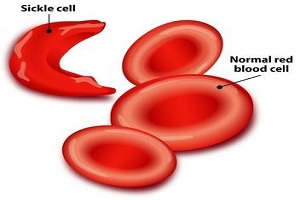
Sickle cell anemia is a genetic disease which happens to the red blood cells and that causes them to take on a sickle shape or crescent moon.
These Sickle-shaped red blood cells are prone to get trapped in the small vessels, which blocks blood from reaching to the different parts of the body.
Sickle-shaped cells are getting destroyed faster than normal shaped red blood cells which are leading to anemia.
Symptoms of sickle-shaped anemia include yellow skin and eyes, excessive laziness and fatigue, pain and swelling in hands and feet, pale gums and skin, frequent infections, extreme pain in the chest, arms, back and in legs.
Thalassemia
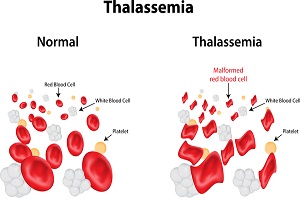
Thalassemia is an inherited blood disorder in which our body makes an abnormal form of hemoglobin.
The result of disorder in excessive destruction of red blood cells which leads to anemia.
Main three types of thalassemia that vary in severity and symptoms include dark urine, excessive tiredness and fatigue, deformities (especially in the face), delayed growth and development and yellow skin or pale skin.
Weil’s Disease
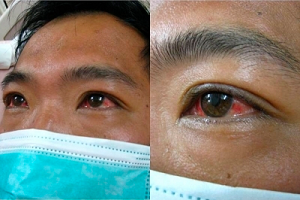
Weil’s Disease is a serious form of the leptospirosis bacterial infection which affects the liver, brain, kidney, and lungs.
This disease can be contracted through contact with contaminated water or soil, or through the tissue or blood of the animals or from the urine of animals which is infected with the bacteria.
Symptoms of Weil’s Disease include loss of appetite, laziness and fatigue, a decrease in urination, rapid heartbeat, weight loss, swollen feet, hands or ankles, yellowing of the eyes and skin and swollen liver.
Click here to read:- 7 tips to make breasts soft, smooth and healthy
Yellow Fever
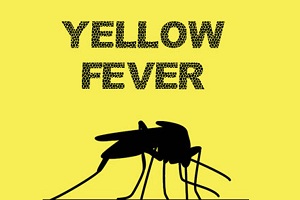
Yellow fever is a serious matter and also potentially deadly. This flu is like a viral disease which is spread through mosquitoes.
This fever is most common in South America and in some parts of Africa.
Yellow fever can be interrupted with a vaccination, which might be required if you are traveling to affected areas.
Early symptoms of this viral infection are like same to those of the influenza virus which includes chills, loss of appetite body aches, headache and fever.
During the deadly stage of this infection, early symptoms sometimes disappear for up to 20 to 24 hours and then come back along with the symptoms of pain in abdominal, seizures, bleeding from nose, mouth, and eyes, decrease in urination, a problem of heart rhythm, delirium and vomiting.
Symptoms of Jaundice
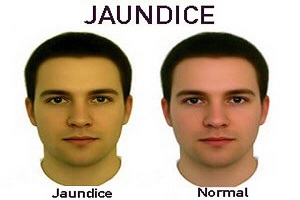
Yellow tinted eyes and skin symbolize the problem of jaundice. In some serious cases, the white portion of eyes turns into orange or brown in color. An affected person may also have pale stools and dark urine.
In the basic health conditions like viral hepatitis can be blame for jaundice; affected person may experience other symptoms which includes vomiting, laziness, and fatigue.
Some peoples think wrong about themselves when they experiencing the yellow skin. People those are suffering from jaundice normally have yellow eyes and yellow skin.
If a person only having yellow skin, then it can happen due to having too much of beta-carotene in your system. Beta-carotene is an antioxidant which is found in foods like pumpkins, carrots and in sweet potatoes. Excessive use of this antioxidant food is not a cause of jaundice.
Causes of Jaundice
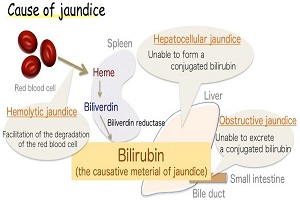
Old red blood cells travel into your liver, where they are broken down. Bilirubin is a yellow pigment formed by the disruption of these old cells. Jaundice happens when the liver of affected person does not metabolize bilirubin the way it is supposed to.
Liver of the affected person may be damaged and unable to perform this process. Sometime the bilirubin simply can’t make it to your digestive tract, where generally it would be removed through your stool. In some cases, there might be too much of bilirubin trying to enter the liver at once or in too many red blood cells and dying at one time.
Click here to read:- 10 World Most Dangerous Diseases Which Can Kill within 24 Hours
Jaundice in Adults is Indicative of:
Alcohol misuse
Liver cancer
Thalassemia
Cirrhosis (scarring of the liver, usually due to alcohol)
Gallstones (cholesterol stones made of a hardened fat material or pigment stones made of
bilirubin)
Hepatitis A
Hepatitis B
Hepatitis C
Hepatitis D
Hepatitis E
Pancreatic Cancer
G6PD Deficiency
Biliary (bile duct) Obstruction
Sickle Cell Anemia
Acute Pancreatitis
ABO Incompatibility Reaction
Drug-induced Immune Hemolytic Anemia
Yellow Fever
Weil’s Disease
Some other blood disorders like hemolytic anemia (the division or elimination of red blood cells which leads to a decreased number of red blood cells in your circulation and that results in fatigue and weakness).
The negative reaction happens due to the overdose of medication such as an acetaminophen (Tylenol).
Jaundice is also a constant incident happens in newborn babies, especially in those babies which are born prematurely. An excess of bilirubin may develop in the newborn babies because their liver has not developed fully yet. This health condition is known as breast mil jaundice.
Tests and Diagnosis
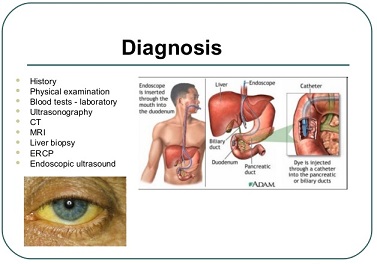
Your doctor will first do the blood test to check the cause of your jaundice. Your blood tests not only figure the total amount of bilirubin in your body, but it also helps to detect the indicators of other diseases just like hepatitis.
Click here to read:- 5 Tips to Attract Your Partner
Other Diagnostic Tests may be used, including:
Tests of liver function is a series of test which measures the levels of certain enzymes and proteins which the liver produces when it is healthy and when it is damaged.
Complete Blood Count (CBC) test to see you if there is any clue of hemolytic anemia.
Imaging studies, that includes an ultrasound or CT scan of abdominal.
Liver biopsies is involved removing the small samples of the liver tissue for testing and microscopic examination.
The harshness of jaundice in newborn babies is normally diagnosed with a blood test. In this small blood sample is taken by pinhole from infant’s toe. A pediatrician will suggest treating if the result of the test gives sign from normal to severe level of jaundice.
Treating Jaundice
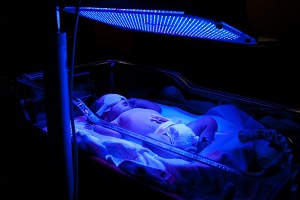
Again, jaundice is not a disease but it also a symptom of the serious possibility of underlying illnesses. Treatment suggests by your doctor suggest you for jaundice is totally depends on its cause. Your doctor will do the treatment of the cause of jaundice, not only of the symptom. Once the treatment of jaundice begins then the affected person’s yellow skin will start to come again in its normal position.
According to the American Liver Foundation, most of the time cases of jaundice in infants clear within the time of one week to two weeks.
Limited type of jaundice is normally treated with photo-therapy in the home or in a hospital to help in removing excessive bilirubin.
Light waves which are used in the phototherapy are been absorbed by the baby’s blood and skin. This light helps the baby’s body change the bilirubin into the waste products to be wiped out. Continue bowl movement with the greenish color stool is a common side effect of this type of therapy. You do not need to worry from this as its just bilirubin is coming out from your body. Phototherapy might engage the use of a lighted pad, which mimics the natural sunlight and is placed on the baby’s skin.
Some serious and dangerous cases of jaundice are treated with the blood transfusion to remove the bilirubin.
Click here to read:- 4 Causes and Symptoms of Heart Related Problem
Conclusion for Jaundice
When you treat the above-written problem then jaundice clears itself, which is also depends on your health condition. Go to your healthcare provider doctor and as jaundice clearly gives the sign of the serious problem of illness. In some normal cases of jaundice in newborn babies goes itself without any treatment and also cause no lasting liver issues.




